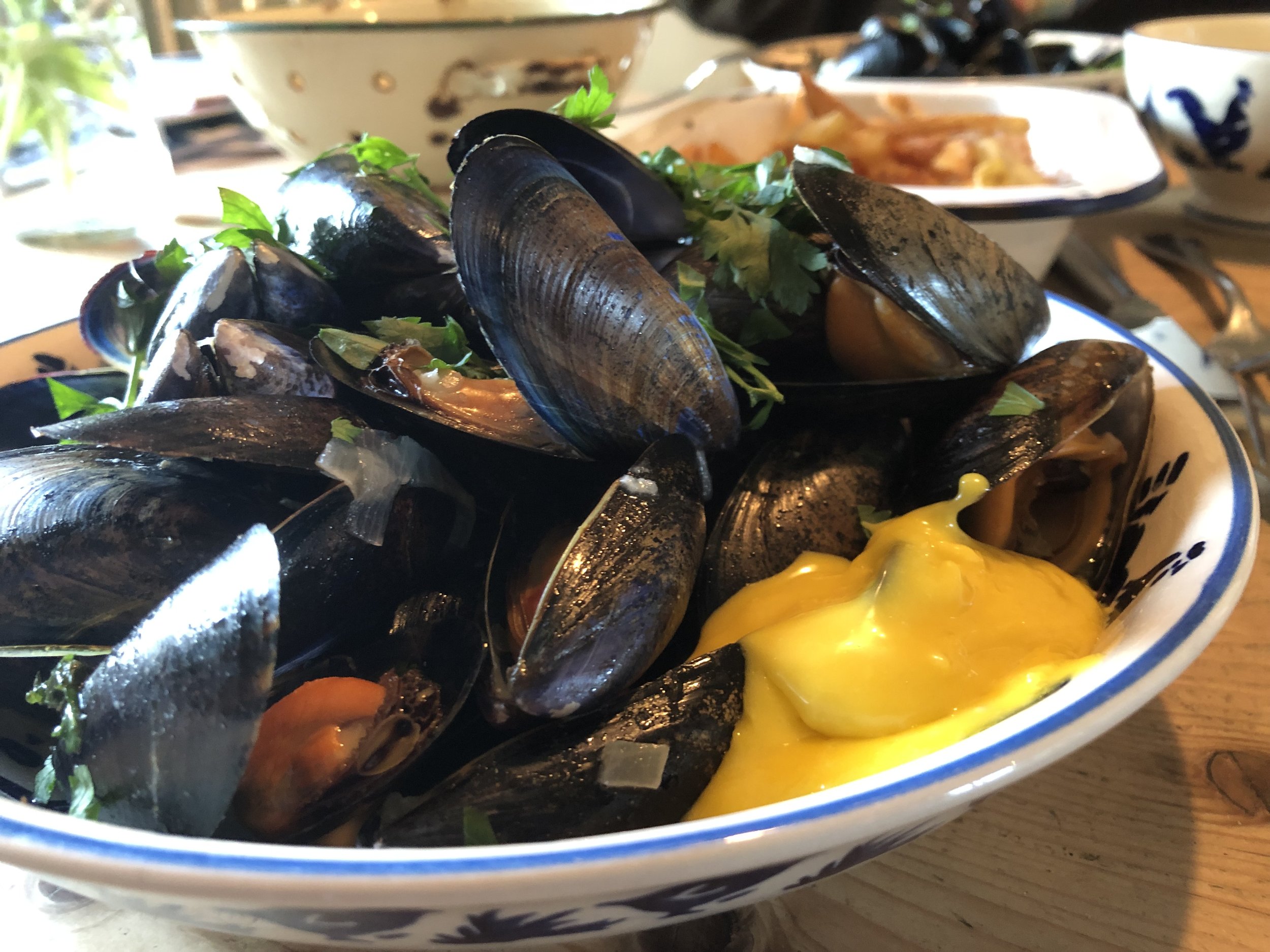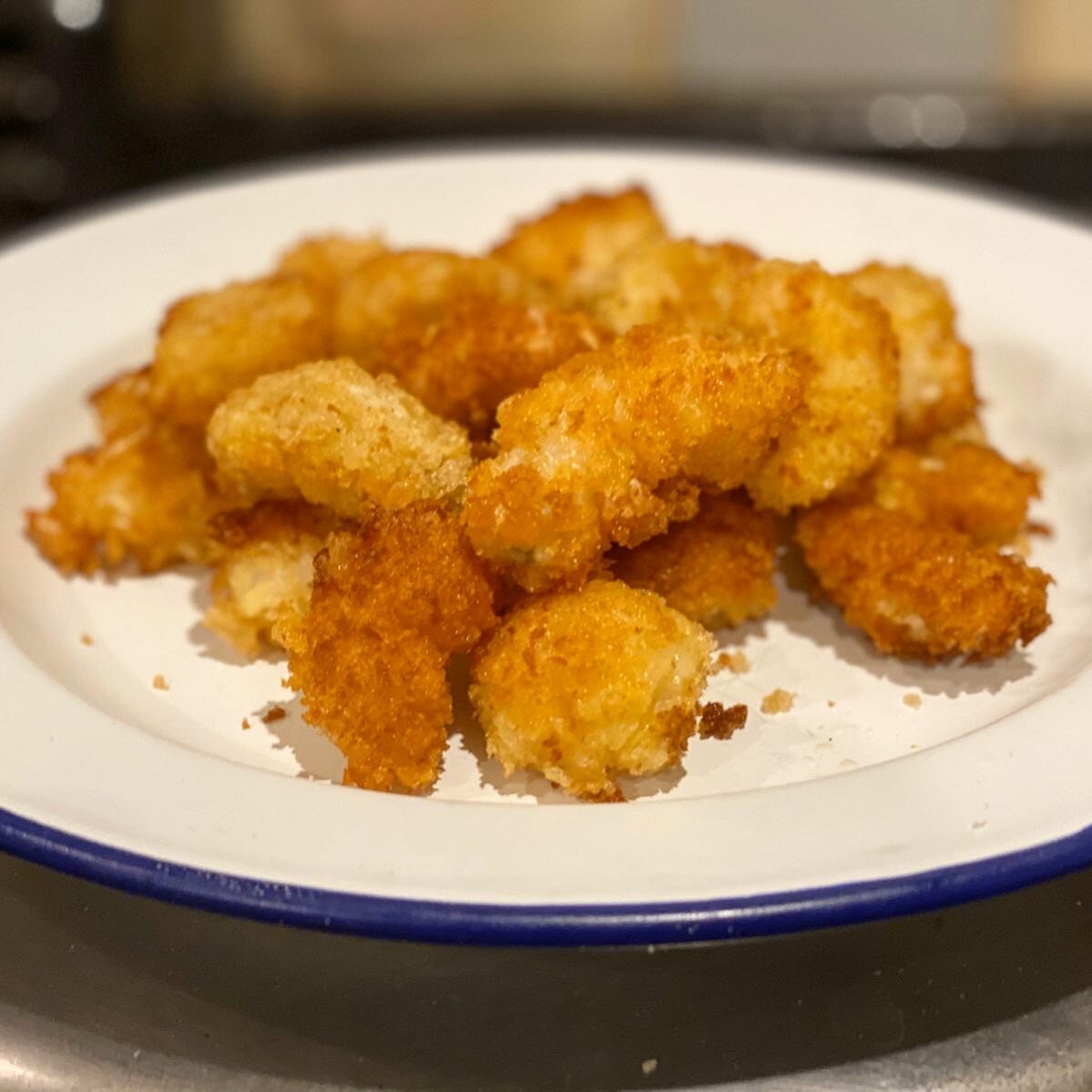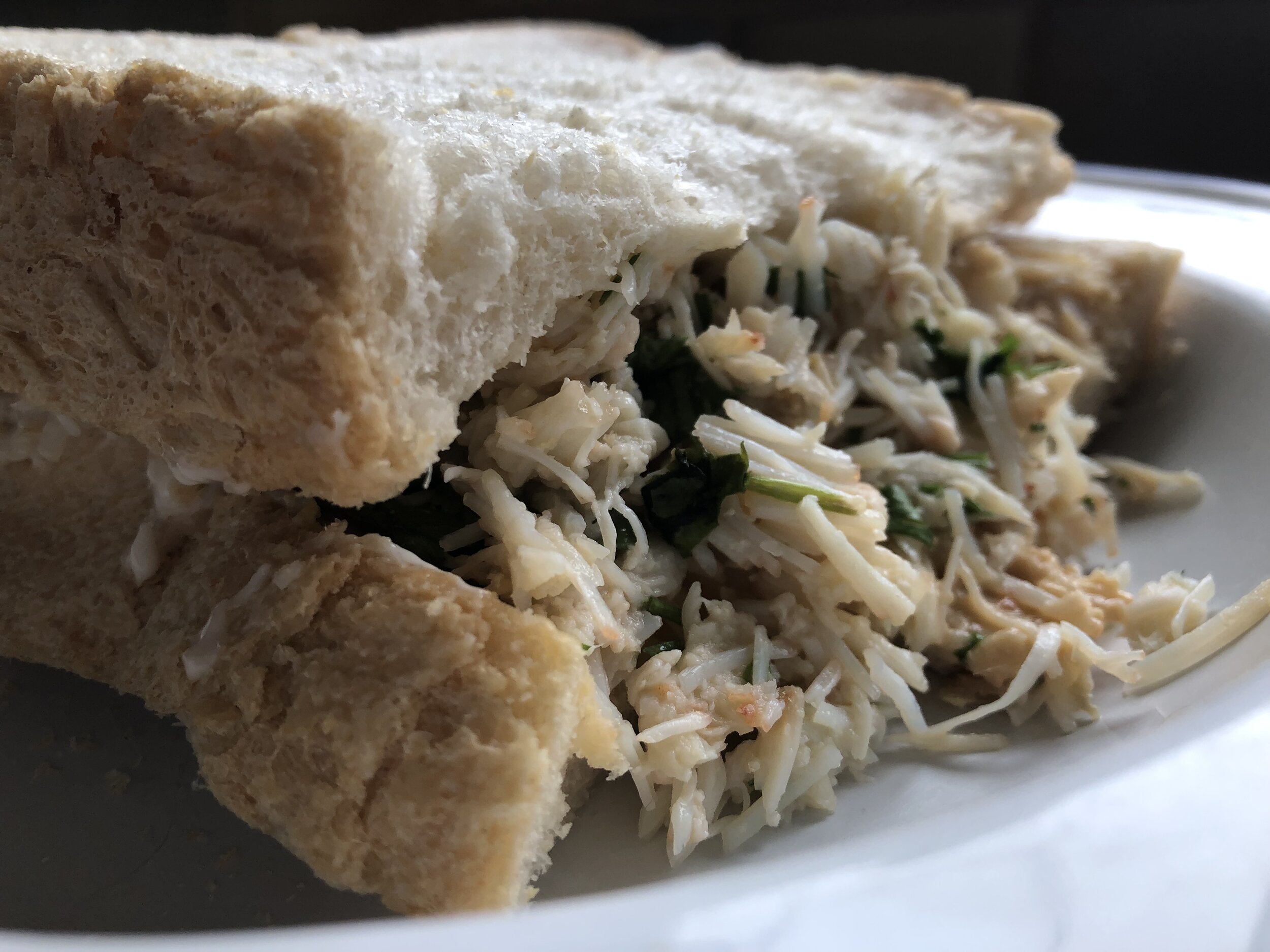Cornish Scampi with Aioli

Langoustines, Dublin Bay prawns, Norway lobster, Nephrops norvegicus or just plain old ‘scampi’ these [mostly exported] delicacies hold a special place in my affections and have done since I first visited Scottish Skipper Jimmy Buchan in Peterhead nearly 6 years ago to learn more about the fishery there.
From the Fladen Ground of the North Sea to the Western Minches and right down to the banks of the Celtic Sea, these iconic crustaceans have traditionally captured the culinary imagination of most of of our European neighbours, but sadly not here in the UK unless their tails are adorned in breadcrumbs, fried and served in a basket.
Over the years I’ve cooked and had cooked for me, some exquisite and delicious lango recipes, all showcasing the product in ways that identify it as a small lobster, rather than a prawn and utilising that unique and sweet flavour to the max. I’ve eaten these shellfish all around the UK and having become something of a talisman for me, I’ve made it my mission to recruit UK consumers to the idea that these creatures are something we could enjoy more fully, especially as (and paradoxically), we’ll consume them ad infinitum when abroad on holiday.
I’ve creel-fished for them on the Isle of Harris, I’ve eaten them out of Loch Fyne and cooked with them aboard Jimmy’s trawler the ‘Amity’ in Peterhead Harbour. However the ultimate challenge for me has been to introduce the ‘Cornish Langoustine’ to chefs, having witnessed them being seasonally landed into Newlyn as as a frozen at sea (FAS) product by another pioneering Scottish skipper, Terry Jack on the ‘Nereus’. Terry and I have worked tirelessly to establish this product as a new and exciting addition to menus and after two years we’re now just starting to see the fruits of our labours appear.
But how do you convince a diner to spurn their normal diet of imported and farmed King or Tiger prawns and replace it with something that, although infinitely more flavoursome, will require a little more dexterity in the eating process?
So without detracting from the eminently recognisable form of the langoustine and combining it with the British love of a crispy-coated thumb of tail meat, I decided to create my own whole tail Cornish Scampi which would be simple to prepare, cook and serve and even easier to eat……
Cornish Scampi
Serves 2
This is a great way of eating traditional scampi but still utilising the full flavour from the head and body of the fish.
Ingredients
8-10 FAS Cornish Langoustines (thawed)
Seasoned plain flour
2 free range eggs (beaten)
2 free range egg yolks
2 garlic cloves (crushed)
1 tsp Dijon mustard
200ml Groundnut or cold pressed rapeseed oil
Pinch sea salt
A quantity of homemade white breadcrumbs
Sunflower or cold-pressed rapeseed oil for frying.
Method
For the Aioli
Whisk the egg yolks together with the salt and Dijon mustard and garlic and when combined, introduce the groundnut oil, in a slow and steady stream, whisking all the while. Keep whisking until a mayonnaise forms and peaks and taste. Refrigerate.
For the Scampi
Having defrosted or thawed the langoustines in cold water (not room temperature) for approx 1015 mins. Careful remove the portion of shell encasing the tail meat. This can be done by cracking and splitting the shell manually or using kitchen scissors to snip along the underside.
Having removed the shells, take out the black intestinal tract that runs dorsally alone the tail and discard. Dry the whole fish on kitchen roll and holding the head, dredge the tail in the seasoned flour and shake off any excess.
Heat the oil in a heavy frying pan and test for bubbling, by dropping some breadcrumbs in. Dip the floured tails in the beaten egg and then roll in the breadcrumbs, still holding the head (this is a lot easier and by far, less messy). Once coated, place the whole fish in the hot oil and fry for 2-3 mins turning to cook evenly and until the breadcrumb coating is crispy and golden and not burnt.
Drain onto kitchen roll and serve immediately with the aioli.
Seafood and fisheries consultant, food writer, broadcaster and UK seafood ambassador.









